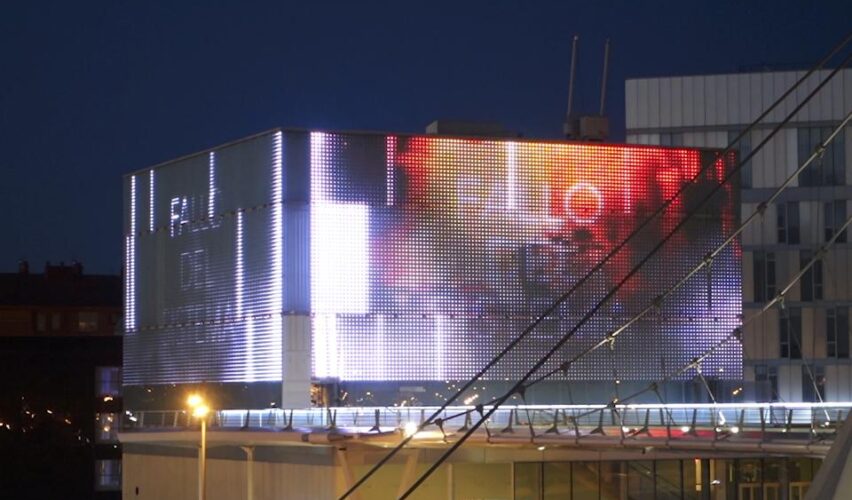I have been recently invited to speak at “Digital Media City (DMC) International Conference” (to be held in the capital city of South Korea on Sep, 27th-28th) about Zaragoza’s Digital Mile innovation district. Digital Media City is, doubtless, a major achievement in South Korea’s strategic move towards an innovative future, a thriving digital district hosting over 60.000 jobs in ICT and Media & Entertainment industries. During the conference, we expect to share visions and experiences on the subject of innovation districts and digital ecosystems throughout Asia, America and Europe. In this context, I feel appropriate to share my personal view as a late member of the core team that struggled, more than a decade ago, to (unsuccesfully) materialize what then seemed a futuristic dream, but what today looks partly as a lost opportunity for my city, Zaragoza: the Digital Mile.
Chapter Zero
As the New York Times wrote in 2008, “few places in Europe had prospered in recent years like this bustling city crossroads city of 700.000, halfway between Madrid and Barcelona”. Capital of the historically agrarian region of Aragón, Zaragoza had led the region’s economic shift to industrialization during the second half of the 20th century. A shift that was culminated with the installation, in the eighties, of one of General Motors’ most productive manufacturing plants. The strategic consensus by the end of the nineties was that Zaragoza’s privileged logistics assets (location and transport infrastructures) could blend with digital innovation to push the city fully into the service’s economy. Two projects, Zaragoza Logistics Platform, around the city’s airport, and the Digital Mile, an innovation district around the new High Speed Train Station, were the first milestones of this plan.
Past
The idea of the digital transformation of Zaragoza and the Digital Mile project were central in the political campaign of the future mayor Juan Alberto Belloch, back in 2003. Once in office, a Scientific Committee with relevant figures in urban innovation was formed with the mission to assist the Mayor and the city in the transition to a knowledge-based economy, and a M.I.T. team was hired to design a “new century public space” (open source, responsive, real and digital), with the goal of turning a million square meters of railroad tracks surrounded by chemical debris into a privileged landing spot for digital industries and a vibrant nest for the recently re-discovered creative classes. In 2004 the city was awarded with the International Expo 2008 to be held at an adjacent site to the future Digital Mile, whose first phase (land development) was completed thanks to the tail wind of the Expo 2008 funds. The day the Expo closed, Lehman Brothers crashed, and the subsequent international economic crisis halted the land sales in the Digital Mile for a decade.
Paradoxically, some of the main ideas in the Digital Mile’s plan, like open source innovation or ubiquitous connectivity, were rescued and implemented at city level. Others, like the need to build a “digital Bauhaus”, or to develop a “digital public realm”, or to foster new digital businesses, were materialized on site through projects such as “Etopia Center for Arts and Technology”, the Digital Water Pavilion, or a set of three specialized business incubators. All are projects that shape Zaragoza’s vision of the future city as an open source smart city, meaning a city whose infrastructures (networks, data, or buildings) can be easily understood, accessed without barriers (economic, technological, or physical), and, ultimately, reconfigured. A city whose success is bound to the success of its communities, which naturally leads to equality and inclusion.
Present
In 2015, the 15-M protest movement entered as a new political party into the city government, as a political consequence of the long economic crisis. Social inclusion, citizen participation and green mobility are, in the current political term, higher than ever on the agenda. The scale of projects have been considerably reduced to resemble a sort of urban acupuncture across many city management domains. In this context, the Smart City Department pursues its mission of providing transversal tools, such as the Citizen Card, capable of integrating multiple domains of city operations (mobility, culture, sports, etc) on the basis of a single, all-in-one digital access key.
In 2017, with land sales reactivating again, it remains unclear whether the new municipal administration will pursue the original idea of the Digital Mile as a digital innovation district. What is certain is that “Etopia Center for Arts and Technology”, distilling the ideas of the Digital Mile in a single hub, already contains a one-of-a-kind innovation ecosystem in which artists, digital entrepreneurs, public servants, researchers, kids and families learn, work, create and play together. Programs such as “100 ideas Zaragoza” for collaborative city making, “Etopia Kids” that immerses kids and families into the culture of creativity and innovation, or “Danza Trayectos”, blending arts and technology, are tangible examples of what a open source institution like “Etopia…” may produce.
Future
It is unlikely that we’ll ever see the Digital Mile materialize as it was conceived in 2006. There is still a fundamental mismatch of interests between the project conception of an innovation district and the (public) society in charge of land development (Zaragoza Alta Velocidad), which is mainly owned by the national and regional governments, more interested in reducing a paralyzing debt through land sales than in urban innovation. On the City Hall side, the Digital Mile’s aura of “bombastic project” still resounds in the political heads in office. However, last July the Mayor of Madrid, Manuela Carmena, unlocked the “Chamartin Operation”, the development of a gigantic business district in Northern Madrid around Chamartin train station. A project with evident resemblances with the Digital Mile, although at a much bigger scale. With her unexpected move, Carmena, from the same political camp than the Mayor of Zaragoza, Pedro Santisteve, may have removed a long established tabú between the left-wing political parties that support the self-proclaimed ‘mayors of change” in Madrid, Barcelona and Zaragoza. The end of the financial crisis and the examples of other innovation districts around the world, may help to start to rebuild a strategic consensus around the idea of pushing Zaragoza into the knowledge economy with a cross-cutting innovation district, re-adapted to our times and context. And, who knows, although the project of the Digital Mile looks pretty lifeless from the outside, well… it may just be hybernating.
This article is published under a Creative Commons license. Some rights reserved.
Photo: Ayuntamiento de Zaragoza












